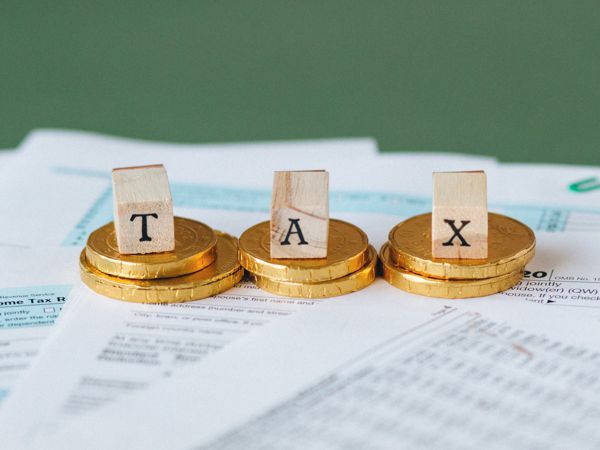
Uncle Sam Wants To Help Buyers Of New & Used Machinery
Machinery plays a vital role in our economy. From farming and construction to manufacturing and logistics, heavy equipment enables us to produce goods, build infrastructure, and move materials more efficiently. Investing in machinery is one of the key reasons our productivity remains strong.
Recognizing the importance of capital investments, Congress has long supported tax incentives for businesses that purchase new or used machinery. One of these incentives is bonus depreciation, which helps companies reduce their taxable income by allowing them to deduct a large portion of an asset’s cost upfront.
This tax break encourages businesses to invest in modern, efficient machinery, keeping the economy moving forward. But how exactly does it work, and what qualifies? Let's take a closer look.
What Types Of Purchases Qualify For Bonus Depreciation?
According to current IRS guidelines, bonus depreciation applies to tangible personal property with a recovery period of 20 years or less. This includes a wide range of machinery such as tractors, excavators, cranes, forklifts, and more. Most heavy equipment purchases fall into this category.
Importantly, used machinery also qualifies—provided it was not previously owned by the buyer. Before the 2017 tax reforms, used equipment did not qualify for bonus depreciation. Now, as long as the machine is used for business purposes, it can be fully depreciated in the year of purchase.
However, not all purchases are eligible. Real estate improvements, land, and certain types of vehicles (like passenger cars) are excluded. Additionally, farm equipment has its own set of rules, with some assets having shorter recovery periods than others.
How Is Bonus Depreciation Calculated?
Depreciation is a way to spread out the cost of an asset over its useful life. Normally, businesses use a depreciation schedule to determine how much they can deduct each year. But bonus depreciation allows you to deduct a larger percentage upfront.
There are two main types of depreciation: book depreciation and tax depreciation. Book depreciation is used for financial reporting and is usually smoother, while tax depreciation follows IRS rules and often allows for faster deductions.
In 2021, the bonus depreciation rate is 100% of the asset’s value. This means you can deduct the full cost of qualifying equipment in the year you buy it. However, if you also use Section 179 deductions, the order matters—tax professionals often recommend using Section 179 first, then applying bonus depreciation to the remaining balance.
What Is Bonus Depreciation In 2021?
As of now, the bonus depreciation rate is 100%, but this will gradually decrease over time. The IRS has outlined the following schedule:
| Year |
Bonus Depreciation
Deduction |
| 2017 | 100% |
| 2018 | 100% |
| 2019 | 100% |
| 2020 | 100% |
| 2021 | 100% |
| 2022 | 100% |
| 2023 | 100% |
| 2024 | 80% |
| 2025 | 60% |
| 2026 | 40% |
| 2027 | 20% |
| 2028+ | 0% |
Examples Of Bonus Depreciation For New & Used Machinery Purchases
Example 1: You buy a used mini excavator for $25,000. Since it was not previously owned by you and is used for business, you can deduct the full amount in the same year.
Example 2: A new attachment for your machinery costing $3,000 qualifies for full bonus depreciation, even if it's not the main equipment itself.
Example 3: If you buy a tractor for $1,200 and use it mostly for personal use, it doesn't qualify for bonus depreciation.
Example 4: If you use Section 179 to cover the full cost of a dozer, you can’t apply bonus depreciation on the same asset.
Example 5: If you choose not to apply bonus depreciation to one truck, you must apply the same rule to all similar trucks purchased in the same year.
How Does Bonus Depreciation Work With Section 179?
Section 179 and bonus depreciation both help reduce taxable income, but they work differently. Section 179 allows you to deduct the full cost of an asset as an expense, rather than capitalizing it. Bonus depreciation, on the other hand, lets you deduct a percentage of the asset's cost in the first year.
Section 179 has a dollar limit ($1.05 million in 2021), while bonus depreciation has no cap. Also, Section 179 gives more flexibility in how you apply the deduction, whereas bonus depreciation requires you to treat all similar assets the same.
Most tax professionals recommend using Section 179 first, then applying bonus depreciation to the remaining balance. This combination can lead to significant tax savings.
Important Note
This article is intended to provide general information about bonus depreciation and is not a substitute for professional tax advice. Always consult a qualified tax accountant for guidance on your specific situation. We are not responsible for any tax-related decisions you make based on this content.
Tax laws change frequently, and interpretations may vary. It’s important to stay informed and seek expert advice to ensure compliance.
Resources
IRS Form 4562 for depreciation
How a business owner got a free truck
Find Similar Articles By Topic
#agriculture #transportation #material handling #construction #taxes
Single Chamber Vacuum Machine,Single Chamber Vacuum Sealer,Single Chamber Vacuum Packing Machine,Single Chamber Vacuum Packaging Machine
Hangzhou Jingyi E-commerce Co.,Ltd , https://www.jypackmfg.com
![<?echo $_SERVER['SERVER_NAME'];?>](/template/twentyseventeen/skin/images/header.jpg)